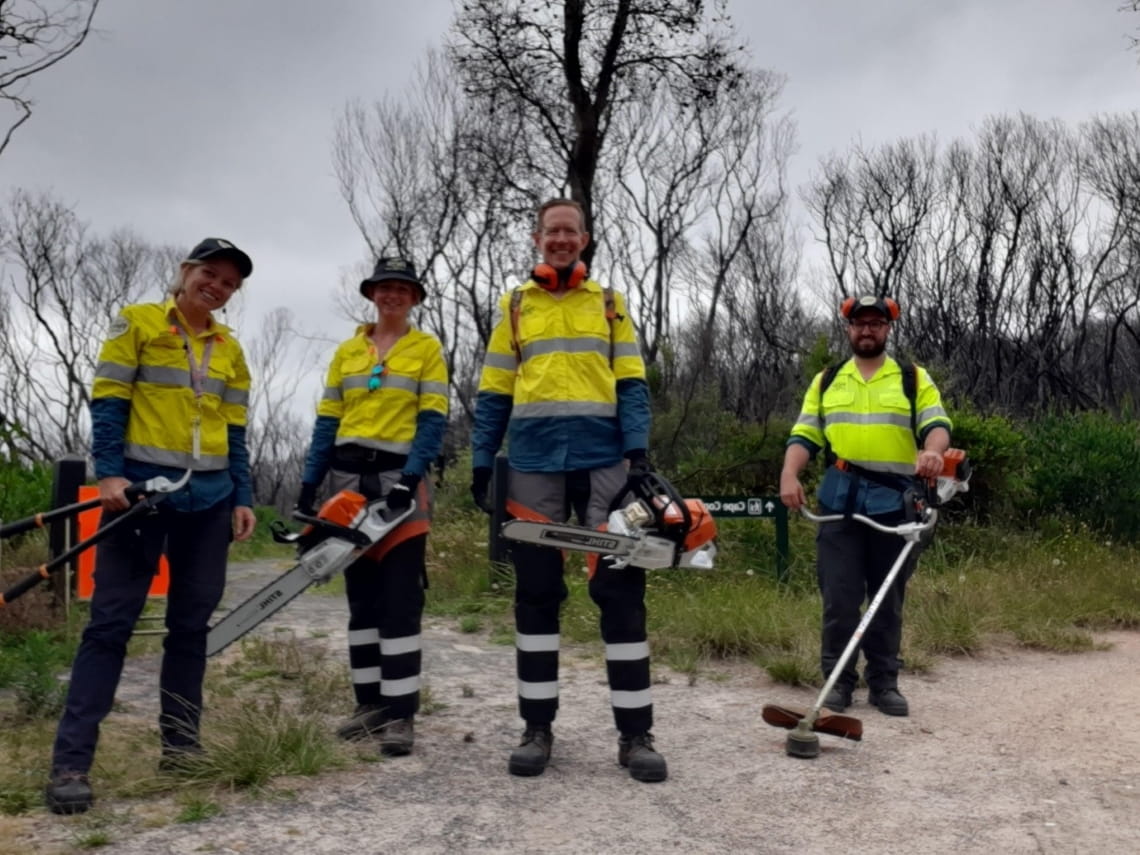A team of new Parks Victoria staff are helping with bushfire reconstruction and economic recovery in east Gippsland and north-east Victoria.
The group of 30 new land management staff have started work over the last two months, based in Bairnsdale, Bendoc, Buchan, Cann River, Cape Conran, Mallacoota, Bright and Tallangatta.
Recruited from across Australia, the team has been funded through the Victorian Government's 2021-22 State Budget.
They've plunged straight into work to rebuild and reopen the remaining damaged parks infrastructure across Gippsland.

Team Leader Ellie Boyle and team members Pip Lander, Josh Poole and Sasha Johnston get to work at Cape Conran. They're four of the 30 new recovery staff to join Parks Victoria in the last few months. Credit: Parks Victoria
Parks Victoria's Recovery Operations Manager Susie Cutlack says the team are drawn from many different walks of life.
"The new teams are a mixture of people already living in the communities and people new to the area, combining local employment and opportunities to bring people in to benefit the local economy," she says.
"The recovery teams are focused on opening up, and keeping open, tracks and trails by manual labour. They are also undertaking replacement of minor assets such as picnic tables and bollards. They're keeping areas open for locals and visitors by managing fast-growing vegetation and putting back the infrastructure that was burnt."
This includes the renowned Wilderness Coast Walk along the wild and remote coast of far-east Gippsland, a 100km track that needs to be cleared of undergrowth and dangerous trees at the same time as its destroyed lookouts, toilets, steps and bridges are rebuilt.
Ongoing bushfire recovery works are supported by the Victorian Government's $110 million Eastern Victoria Fires 2019-20 State Recovery Plan.
Completed works include the reconstruction of two jetties in Mallacoota, reopening of the Buchan Caves Reserve, the new boardwalk at Salmon Rocks and restored access to Yeerung beach.
More than 110 km of roads and tracks have already been reopened along with hazardous tree management at 18 important visitor areas and campgrounds, to improve safety for visitors and staff.






